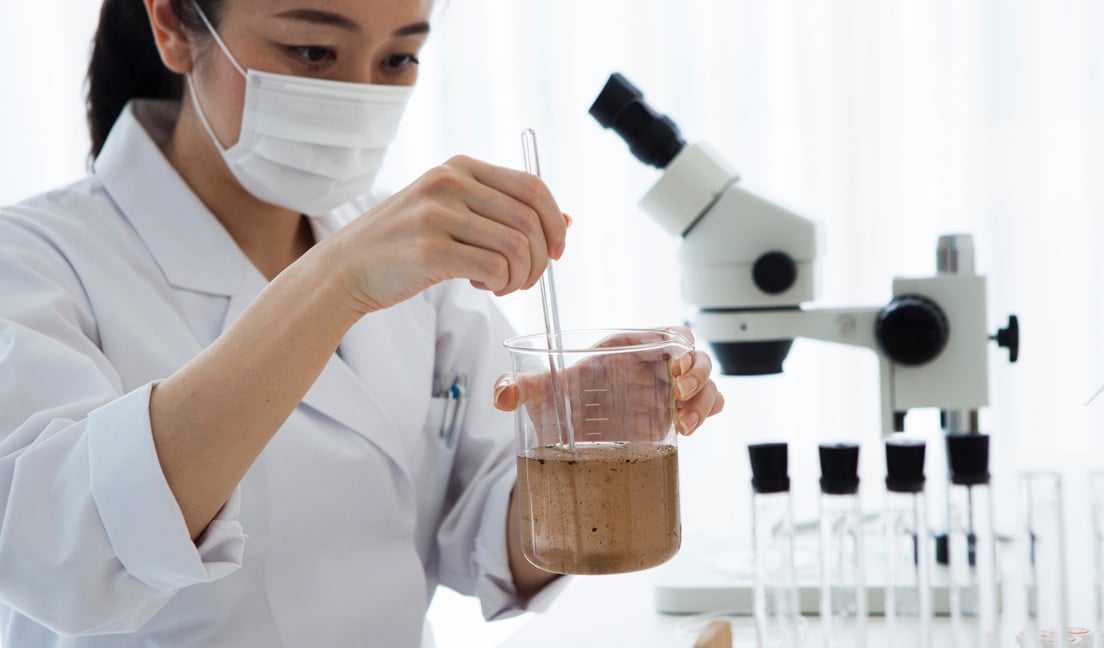The Importance of Picking Water Testing Services Tampa for Your Wellness
The Importance of Picking Water Testing Services Tampa for Your Wellness
Blog Article
Discover What Is Consisted Of in Water Examining and How It Guarantees Safe Alcohol Consumption Water
Comprehending the complexities of water testing is critical in ensuring the high quality and safety and security of our drinking water. Via a careful evaluation of physical, chemical, and microbiological facets, water testing recognizes prospective contaminants that can pose wellness dangers.
Key Components of Water Screening
Water testing is a critical procedure that involves a number of crucial parts to guarantee the security and top quality of drinking water. Among the main components is the assessment of physical features, including odor, turbidity, and shade. These qualities can give first insights right into the water's problem and potential contamination resources. In addition, ensuring the pH balance of water is crucial, as it impacts the water's corrosiveness and the efficiency of sanitation processes.
One more considerable part involves microbiological evaluation, where water examples are examined for the presence of microorganisms such as germs, viruses, and protozoa. This analysis is important to determine biological dangers that might present health dangers if taken in. Furthermore, chemical analyses are conducted to find not natural and organic materials, such as heavy steels, nitrates, and chemicals, that may be existing in the water system.

Discovering Hazardous Contaminants
Identifying damaging impurities in alcohol consumption water is a fundamental element of securing public wellness. Each type of impurity poses distinct health and wellness dangers, making their discovery critical to ensure the water consumed by the public is risk-free.
Water screening for impurities is generally carried out by regulative companies and water utilities, utilizing a combination of field sampling and lab analysis. These evaluations are developed to spot both naturally happening substances and anthropogenic contaminants that may have entered the supply of water via agricultural overflow, industrial discharge, or aging infrastructure. Regular surveillance is essential, as contamination degrees can rise and fall as a result of ecological modifications, seasonal variations, or human activities.
The recognition of dangerous pollutants notifies necessary activities, such as water therapy interventions or public advisories, to alleviate threats. Early discovery is crucial to stop unfavorable health results, ranging from intestinal diseases to long-term problems like cancer, thereby ensuring the proceeded safety of drinking water.

Chemical Evaluation Methods
In the realm of guaranteeing risk-free drinking water, chemical evaluation methods play a pivotal role in identifying and measuring pollutants. These approaches are necessary for finding a wide selection of chemical substances, consisting of heavy metals, chemicals, and industrial contaminants, which can posture considerable health and wellness threats. Techniques such as atomic absorption spectroscopy (AAS) and inductively combined plasma mass spectrometry (ICP-MS) are generally employed to determine trace degrees of steels like arsenic, lead, and mercury. These tools supply precise quantification, facilitating compliance with regulative standards.
Gas chromatography-mass spectrometry (GC-MS) is an additional crucial method, especially for organic compounds. It divides complicated mixes and determines unstable and semi-volatile natural compounds, ensuring that pollutants like benzene and toluene are within safe limits. High-performance liquid chromatography (HPLC) is in a similar way made Recommended Reading use of for non-volatile materials, including specific pesticides and pharmaceuticals.
Ion chromatography is employed to determine focus of cations and anions, such as nitrates and sulfates, which are essential in examining water high quality. These chemical analysis techniques collectively make certain that alcohol consumption water stays risk-free by spotting variances from developed pureness norms, thus guarding public wellness. Ensuring accuracy and accuracy in these tests is paramount to keeping the stability of water security assessments.
Microbiological Testing Approaches
Precise microbiological testing is crucial for guarding recommended you read public health and wellness by ensuring that drinking water is devoid of dangerous microorganisms. This procedure includes spotting and identifying bacteria such as microorganisms, viruses, and protozoa that may pollute water products. Typical virus include Escherichia coli, Giardia, and Cryptosporidium, each posturing significant health threats.
Several techniques are employed in microbiological testing to recognize these risks. The membrane layer filtration method is frequently utilized, entailing water going through a filter that records bacteria, which are after that cultured to identify their visibility and concentration. Conversely, the multiple-tube fermentation method allows the metrology of coliform bacteria using a collection of dilution and incubation steps.
Developments in technology have presented molecular strategies such as polymerase domino effect (PCR), which enables the extremely details and quick detection of pathogens by magnifying their hereditary product. Enzyme-linked immunosorbent assays (ELISA) additionally provide an approach to spot pathogens by determining certain healthy proteins or antigens.
These differed techniques are vital for extensive water quality evaluation, making sure that water therapy procedures work which distribution systems maintain safety. redirected here By employing these microbiological testing methods, potential health hazards can be determined and minimized promptly.

Importance for Public Health
Making certain the microbiological safety and security of drinking water directly affects public health by preventing the spread of waterborne conditions. Microorganisms such as bacteria, infections, and protozoa can cause diseases like cholera, dysentery, and gastrointestinal infections (Well water testing services). The execution of detailed water testing methods is vital in identifying and minimizing these dangers, thus safeguarding neighborhoods from potential episodes
Regular water screening not only identifies microbial pollutants yet likewise analyzes chemical and physical criteria that could affect wellness. Too much levels of nitrates or heavy steels such as lead can position significant wellness threats, specifically to vulnerable populaces like infants and pregnant females. By determining these hazards early, water testing makes it possible for prompt treatments, making certain the water system stays within risk-free usage requirements.
Moreover, water testing plays an important role in keeping public confidence in metropolitan water systems. For plan manufacturers and health officials, the information derived from water screening informs choices on infrastructure financial investments and public wellness techniques, ensuring sources are guided where they are most needed.
Verdict
Water screening acts as an essential mechanism for making certain the safety and quality of alcohol consumption water through detailed assessment of its physical, chemical, and microbiological residential properties. By identifying hazardous contaminants, such as heavy metals and chemicals, and using advanced techniques like chromatography and spectrometry, water screening facilitates the identification of prospective health threats. The application of rigorous testing protocols is essential for preserving conformity with safety standards, inevitably guarding public health and enhancing confidence in community water systems.

By recognizing these risks early, water screening enables prompt treatments, ensuring the water supply remains within secure intake requirements.
Water testing offers as an important mechanism for making certain the security and quality of drinking water with extensive examination of its physical, chemical, and microbiological residential or commercial properties.
Report this page